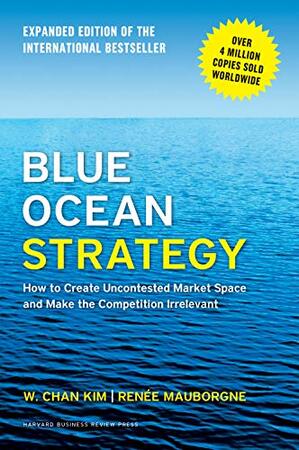
The Warren Buffet Way
Introduction to the book
The Warren Buffett Way by Robert Hagstrom is a comprehensive exploration into the investment philosophy and strategies of one of the most successful investors of all time, Warren Buffett. In this section, we’ll delve into the background of Warren Buffett, his investment principles, and the overall structure of the book.
Background of Warren Buffett
The book opens by providing readers with a glimpse into the life of Warren Buffett, detailing his early years, influences, and the development of his unique investment approach. From his childhood entrepreneurial ventures to his mentorship under Benjamin Graham, the father of value investing, Buffett’s journey sets the stage for understanding the principles that shape his investment decisions.
Investment Philosophy
Hagstrom introduces readers to the core tenets of Buffett’s investment philosophy, emphasizing the principles of value investing, economic moats, and the importance of a long-term perspective. The author explores how Buffett seeks businesses with durable competitive advantages, aiming to invest in companies that can withstand economic downturns and market fluctuations.
Structure of the Book
“The Warren Buffett Way” is organized to provide a comprehensive understanding of Buffett’s investment strategies. The book is divided into key thematic sections, each unraveling a specific aspect of Buffett’s approach. From understanding financial statements to assessing management quality, the book guides readers through the intricacies of value investing.
Fundamental Analysis and Financial Statements
The heart of Buffett’s investment strategy lies in fundamental analysis, and this section of the book delves into the details of how he evaluates companies through a rigorous examination of their financial statements.
Importance of Fundamental Analysis
Hagstrom elucidates why fundamental analysis is the cornerstone of Buffett’s decision-making process. By analyzing financial statements, assessing a company’s earnings, and understanding its competitive position, investors can identify businesses with long-term growth potential.
Understanding Financial Statements
The book provides a detailed breakdown of how Buffett interprets financial statements. From deciphering income statements and balance sheets to calculating key financial ratios, readers gain insights into the analytical tools Buffett employs to make informed investment decisions.
Economic Moats
Central to Buffett’s strategy is the concept of economic moats – the sustainable competitive advantages that protect a company from competitors. Hagstrom explores the various types of moats, including brand strength, cost advantages, and network effects, offering readers a framework for identifying businesses with enduring competitive positions.
The Psychology of Investing
Buffett’s success extends beyond financial acumen to a deep understanding of the psychological aspects of investing. This section of the book explores how Buffett navigates the emotional challenges inherent in the world of finance.
Behavioral Finance
Hagstrom delves into the principles of behavioral finance, demonstrating how emotions and cognitive biases can impact investment decisions. By understanding these psychological pitfalls, investors can strive to make more rational and objective choices.
Mr. Market and Market Fluctuations
The book introduces readers to Buffett’s famous metaphor, “Mr. Market,” illustrating the whimsical and often irrational nature of the stock market. Hagstrom discusses how Buffett views market fluctuations not as a hindrance but as opportunities to acquire quality businesses at discounted prices.
Business and Management Quality
Beyond financial metrics, Buffett places significant emphasis on the quality of a company’s management and its ability to navigate challenges and foster long-term success. This section explores the vital role of effective leadership in Buffett’s investment strategy.
Assessing Management Quality
Hagstrom outlines the criteria Buffett uses to evaluate the competence and integrity of a company’s management. From their capital allocation skills to their communication with shareholders, understanding the people behind the business is crucial to Buffett’s investment approach.
Competitive Advantage through Management
The book highlights how Buffett sees management as a key component of a company’s economic moat. Exceptional leadership can create a sustainable competitive advantage, and Hagstrom provides real-world examples to illustrate how Buffett identifies and values effective management.
Putting It All Together – Building a Buffett-Style Portfolio
In the final section, the book guides readers through the practical application of Buffett’s principles in constructing a well-rounded investment portfolio.
Constructing a Portfolio
Hagstrom offers insights into how Buffett diversifies his investments across different sectors while maintaining a focused portfolio of businesses he thoroughly understands. The importance of patience and discipline in waiting for the right opportunities is emphasized, reflecting Buffett’s own approach to portfolio construction.
Long-Term Perspective
The book concludes by reiterating the significance of adopting a long-term perspective in line with Buffett’s own approach. By cultivating a patient and disciplined investment mindset, investors can better weather short-term market fluctuations and focus on the fundamentals that drive long-term success.
Conclusion
“The Warren Buffett Way” by Robert Hagstrom serves as an invaluable guide for investors seeking to understand and apply the principles that have made Warren Buffett an investment legend. Through a comprehensive exploration of Buffett’s life, philosophy, and strategies, Hagstrom equips readers with the knowledge and tools to approach investing with a discerning and informed mindset. The book not only demystifies the intricacies of value investing but also imparts timeless lessons on patience, discipline, and the importance of a well-researched, long-term investment approach.















